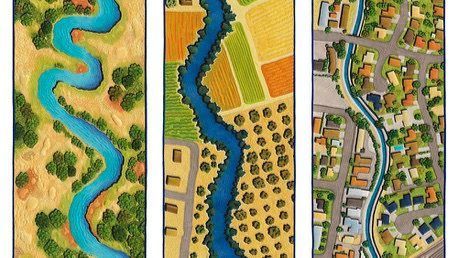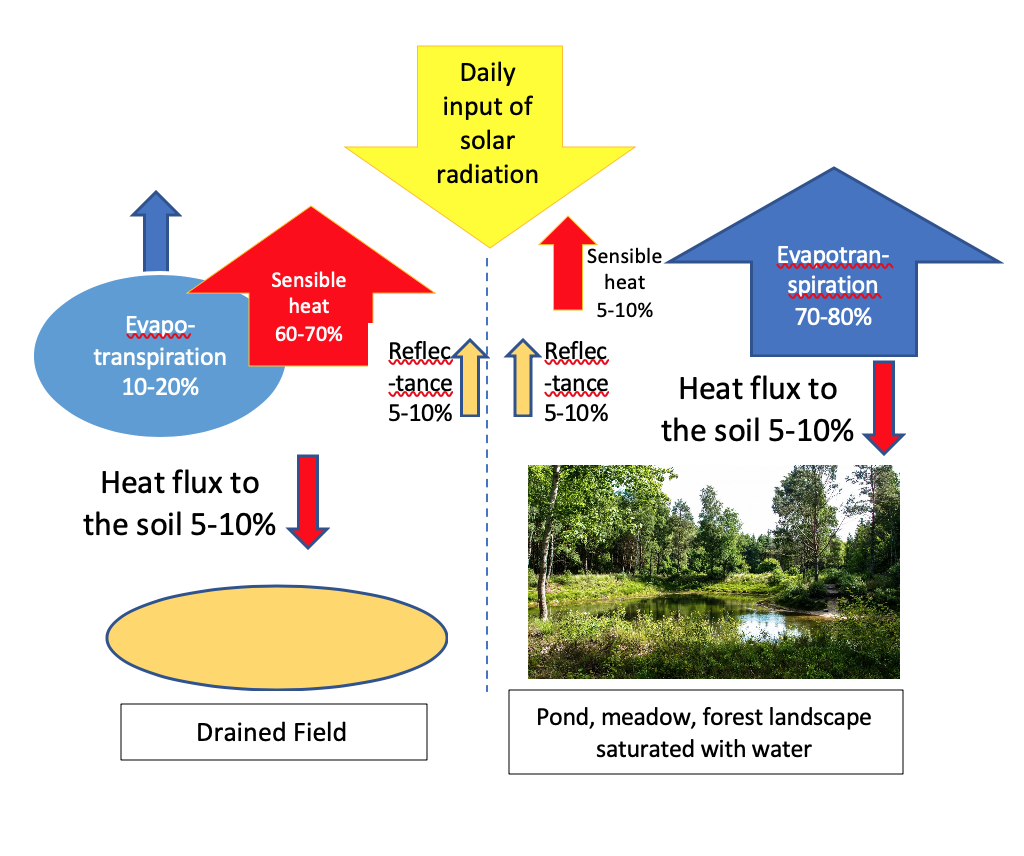- About Us
- Our Work
- Tree Info
- Get Involved
- Blog
- Volunteer
- Support Us
By Canopy Team on June 16, 2020

COVID-19 is re-making our world in myriad and fundamental ways. Thanks to the rigorous “shelter-in-place” mandates from our prescient health officers, we are learning (knock on wood) to flatten the curve. But what a hit it is on jobs, incomes and municipal budgets. Mother Nature is reminding us that even our mighty Silicon Valley economy is indeed subsidiary to the forces and complexities of nature and human health.
More than ever, our vision for “Green Streets for Sustainable Communities” is critical to our region’s long-term health. We must learn to work WITH nature and not against her, to reduce long term costs. Join us on Sept. 10, Sept. 25 and Oct. 8 for our three-part symposium.
Here’s one example of the power of trees to transform our urban environment adapted from “Water for the Recovery of the Climate”:

“Transpiring plants, especially trees, are the perfect air-conditioning system of the Earth. Let’s imagine a large, independently standing tree with a crown of about 10 meters (about 30 feet) in diameter. On the crown of this tree, which has a surface area of 80 square meters (about 860 square feet), there falls each day about 450 kWh of solar energy (4-6 kWh/m2). Part of the solar energy is reflected, part is absorbed by the soil and part is converted into heat. If such a tree is well stocked with water, it evaporates (transpires) some 400 litres (100 gallons) of water each day. For the transformation of water from a liquid state into water vapor, 280 kWh is consumed. This amount of energy thus represents the difference between the shadow of a tree and the shadow of a parasol with the same diameter. In the course of a sunny day, then, such a tree cools with a power equal to 20-30 kW, power comparable to that of more than 10 air-conditioning units.
The tree is at the same time “fueled” only by solar energy, is made of recyclable materials, requires a minimal amount of maintenance and emits water vapor that is regulated by millions of stomata which respond to the heat and humidity of the surroundings. The main thing is that the solar energy bound up in water vapor is carried away and is released upon its condensation in cool locations. It thus balances temperature in time and space, unlike a refrigerator or air-conditioner, which release heat into its nearby surroundings. A tree, unlike a refrigerator or air-conditioner, is also completely noiseless, absorbs noise and dust and binds CO2.
The cooling effect of vegetation is also evident from … infrared photographs. The temperature of the roofs and facades of homes exceeds 30°C (86 degrees F), whereas the temperature of the trees in the park is around 17°C (62°F). Vegetation actively cools through the evaporation of water. The effect of reflectance is much lower in comparison with the effects of transpiration.”

Kravčik’s paper makes a compelling case about the role of trees, soil and plants in the water cycles and energy cycle and the power of evapotranspiration. There are other cycles – nitrogen cycle, rock cycle, etc. of which most of us are blissfully unaware. But the climate change crisis is telling us that 7.8 billion human beings are having an unintended but cumulative and irreversible impact on our earth systems.
The COVID-19 crisis has introduced the concept of “flattening the curve” into our consciousness. This is the idea that we need to act today to avoid a foreseeable catastrophic spike in the near future.
Scientists have warned us that climate change is here today but it will get much worse unless we take decisive action today. The public street system is the single largest landholding that most cities own and control. This is where we can take decisive action.
Green streets can capture and hold water to be used locally, can support plant and bacteria/fungal systems that immobilize nutrients to be used by these plants, and these trees and plants in turn will make our daily lives much more pleasant through their life-giving transpiration and respiration. The tree canopies on our green streets also contribute to our community’s public health, both physical and mental, by scrubbing the fine particulate matter from the air … and as an added bonus, they are beautiful! Streets shaded by trees beckon people to be outside, to stroll and socialize, making communities safer and healthier.
In our pre-COVID-19 days, some were talking about “smart” cities – cities and streets encoded with cameras and sensors. Indeed, new technologies will have much to contribute to make our lives more convenient, safer, or better in some ways. But until we take the time to take a deep breath during this shelter in place era, we are missing the big picture. The truth is that green, sustainable streets tap the intelligence of systems and DNA developed over millennia.
We would be foolish not to solicit the expertise of those who are beginning to listen to that wisdom.
Join our three-part symposium on September 10, 25 and October 8th to explore the different “views” of the Green Streets for Sustainable Communities. In the meantime, please check out the new and fabulous resources from Flows to the Bay, Canopy and our other supporting and sponsoring organizations.
Catherine Martineau
Executive Director, Canopy
Board Treasurer, California ReLeaf
Yoriko Kishimoto
President, Transportation Choices for Sustainable Communities
Director, Midpeninsula Regional Open Space District
Former Mayor of Palo Alto
Sustainable Streets Master Plan – Flows to Bay
Flows to Bay – Clean Water. Healthy Community. It’s a team effort!
Green Infrastructure Design Guide – Flows to Bay
https://www.flowstobay.org/wp-content/uploads/2020/03/GIDG-2nd-Edition-2020-03kh-RED.pdf
From Water for the Recovery of the Climate: A New Water Paradigm, Michal Kravčík, J. Pokorný, J. Kohutiar, M. Kováč, E. Tóth 2007
Shannon Mattern – Code and Clay, Data and Dirt
https://www.upress.umn.edu/book-division/books/code-and-clay-data-and-dirt